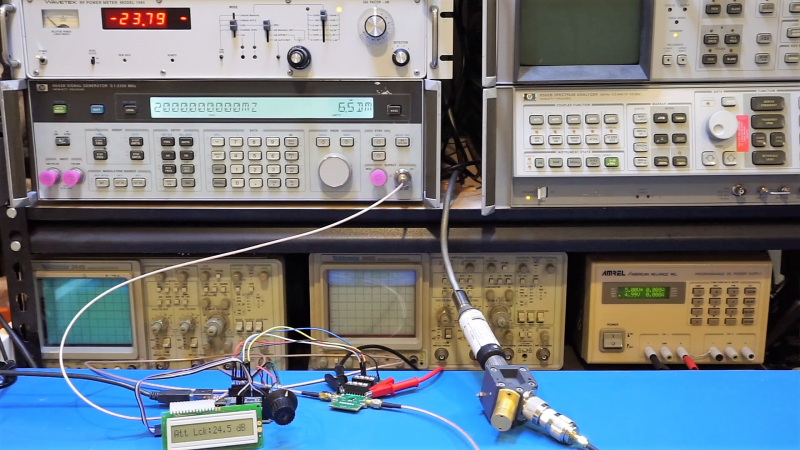[Kerry Wong] comes across the coolest hardware, and always manages to do something interesting with it. His widget du jour is an old demo board for a digital RF attenuator chip, which can pad a signal in discrete steps according to the settings of some DIP switches. [Kerry]’s goal: forget the finger switch-flipping and bring the attenuator under Arduino control.
As usual with his videos, [Kerry] gives us a great rundown on the theory behind the hardware he’s working with. The chip in question is an interesting beast, an HMC624LP4E from Hittite, a company that was rolled into Analog Devices in 2014. The now-obsolete device is a monolithic microwave integrated circuit (MMIC) built on a gallium arsenide substrate rather than silicon, and attenuates DC to 6-GHz signals in 64 steps down to -31.5 dBm. After a functional check of the board using the DIP switches, he whipped up a quick Arduino project to control the chip with its built-in serial interface. It’s just a prototype for now, but spinning the encoder is a lot handier than flipping switches, and once this is boxed up it’ll make a great addition to [Kerry]’s RF bench.
If this video puts you in an RF state of mind, check out some of [Kerry]’s other videos, like this one about temperature-compensated crystal oscillators, or the mysteries of microwave electronics.
















You can buy these as modules from the usual Chinese suppliers – just needing some power and signal control.
“attenuates DC to 6-GHz signals in 64 steps down to -31.5 dBm”
“dBm” is a measure of power, not attenuation. You probably mean “dB”.
dB stands for decibels and dBm stands for decibels per milliwatt, therefore dB is relative and dBm is absolute power. Example; the Sig Gen was set to +3.5 dBm and a Power Meter was connected through a five foot cable. The Power Meter read -1.2 dBm. Therefore the insertion loss of the cable was measured to be 4.7 dB.
I hope that clears thing up.
I don’t see how this clears anything up. I thought my point was already pretty clear: the author used “dBm”, which is a logarithmic measure of power, to specify attenuation, which is a unitless ratio. dB is also unitless, which would make it the appropriate way to express attenuation on a logarithmic scale.
Also, dBm is not “decibels per milliwatt”, which is a nonsensical unit. It’s like the nonsense units “watts per hour” and “amps per hour” we see so often, just because people can’t seem to put units together without saying “per” in between them. “dBm” just means “decibels referenced to 1 milliwatt”, i.e., 0 dBm is defined as 1 milliwatt.
cost of these modules?
$20